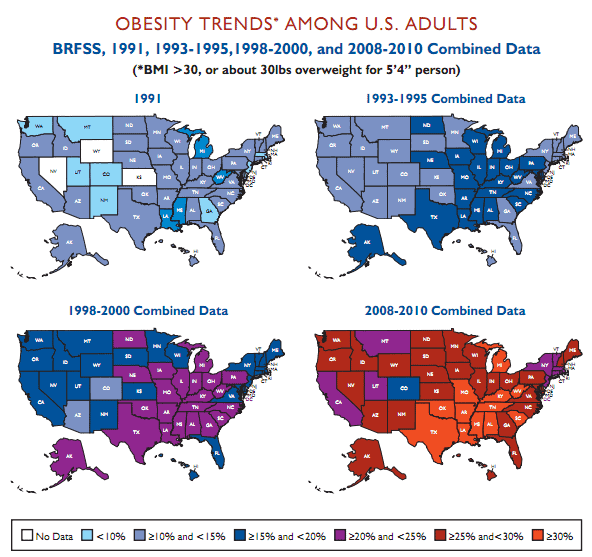A new study reports that almost 30 percent of the world’s population (2.1 billion people) is now obese or overweight. The highest proportion of overweight and obese people – 13% of the global total – live in the United States, a country which accounts for only 5% of the world’s population.
Obesity rates have increased virtually everywhere in the world, especially in the developed world. Some 160 million Americans are obese or overweight. Over 70 percent of all men and 60 percent of all women from the US are overweight, and it seems like the next generation will have similar problems: nearly 30% of boys and girls under age 20 are either obese or overweight, up from 19% in 1980. When talking strictly about obesity, one-third of American men (32%) and women (34%) were obese in 2013 compared with about 4% of Chinese and Indian adults.
These, among others, are the findings of a study conducted by an international consortium of researchers led by the Institute for Health Metrics and Evaluation (IHME) at the University of Washington. The data are available visually here (fantastic graphical representation).
“The rise in obesity among children in the US is especially troubling,” said Marie Ng, Assistant Professor of Global Health at IHME and the paper’s lead author. “We know that there are severe health effects related to childhood obesity, including cardiovascular disease, diabetes, and many cancers. We need to be thinking now about how to turn this trend around.”
Other significant (and disturbing findings) were:
– Over 50% of all obese people live in just 10 countries. These are (listed by number of obese people): US, China, India, Russia, Brazil, Mexico, Egypt, Germany, Pakistan, and Indonesia.
– The countries with the biggest obesity rates are Australia (30%), the United States (30%), and the United Kingdom (24%)
– From 1983 to 2013, obesity in children has increased by almost 50%.
“Obesity is an issue affecting people of all ages and incomes, everywhere,” said Dr. Christopher Murray, director of IHME and a co-founder of the Global Burden of Disease (GBD) study. “In the last three decades, not one country has achieved success in reducing obesity rates, and we expect obesity to rise steadily as incomes rise in low- and middle-income countries in particular, unless urgent steps are taken to address this public health crisis.”
Because of the established health risks and substantial increases in prevalence, obesity has become a major global health challenge. Not only is obesity increasing, but no country in the world has managed to reduce obesity in the last 33 years.
In case you’re wondering, ‘overweight’ is defined as having a Body Mass Index (BMI), or weight-to-height ratio, greater than or equal to 25 and lower than 30, while obesity is defined as having a BMI equal to or greater than 30. It’s not a perfect definition, but it’s the most widely used, and it was the definition used in this study.
Health risks such as cardiovascular disease, cancer, diabetes, osteoarthritis, and chronic kidney disease significantly increase when a person’s BMI exceeds 23
The research was published by the Melinda and Bill Gates foundation.
Scientific Reference: Global, regional, and national prevalence of overweight and obesity in children and adults during 1980—2013: a systematic analysis for the Global Burden of Disease Study 2013










